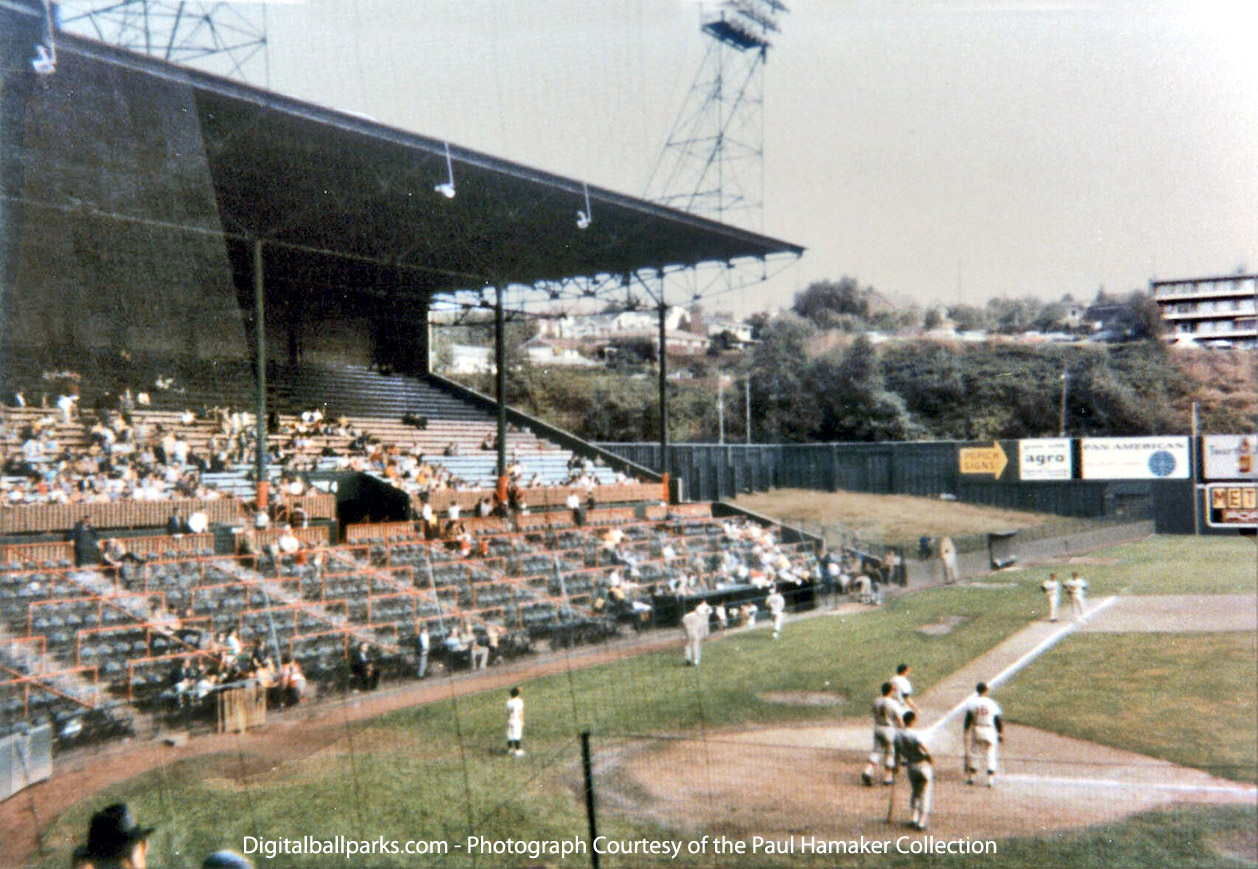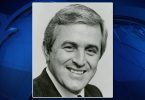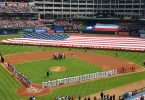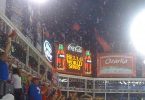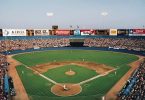The what-ifs of the world are as plentiful as grains of sand on the Beach of La Concha.
The long excursion to what at long last became the Texas Rangers baseball club presented a very interesting scenario of what might have been had major league baseball come to Arlington in 1969 instead of 1972 when the Washington Senators II left the capital for the West.
The Seattle Pilots, in their first season as an American League expansion team, had been given an ultimatum by the city on a Friday in September: Pay up on back rent for use of the 25,000-seat Sick’s Stadium, totaling more than $660,000, by Monday or face eviction by the City Council.
The father of baseball in North Texas was ready to pounce.
“We will immediately wire the Seattle Pilots and suggest to them that a perfect site for the remainder of their home games would be Turnpike Stadium,” said Tom Vandergriff, then in his 18th year as mayor of Arlington. “I intend to tell them that I know we’d have people lining the fences, even though we couldn’t have seats for all of them.
“We’d have far more head count than they could expect in Seattle for the remainder of their games.”
There wouldn’t be enough seats at Turnpike Stadium, in fact only 10,600 permanent and a little more than 3,000 temporary seats.
That would be enough, the mayor believed, for an “anxious” community hungry for big league baseball to prove to the American League that it needed to be in North Texas.
“We’re certain that a brief experience in Texas would convince the league it should play a full complement of games here next year,” Vandergriff said.
Lamar Hunt – the Kansas City Chiefs owner, whose sports enterprises enjoyed the abundant seed of his wildcatter father, H.L. Hunt — and Tommy Mercer, a Fort Worth businessman, were eager, too. The owners of the minor-league Dallas-Fort Worth Spurs, who played in Arlington, were ready to make an offer the near-bankrupt owners of the Pilots could not refuse.
An ownership group led by those two alone would have likely dramatically changed the course of major league history in Dallas-Fort Worth.
The league’s owners and, eventually, a bankruptcy judge made sure that car salesman and onetime Milwaukee Braves minority owner Bud Selig’s bid was the winner, despite Hunt’s and Mercer’s bid reportedly being the best.
A lack of seats at Turnpike Stadium was a factor in North Texas’ bid being spurned, but it was politics that eventually sent the local delegation to yet another stinging defeat. The Pilots had represented the best chance to date for major league ball in DFW.
Seattle was one of two new teams that joined the AL in 1969. Montreal and San Diego came into the National League the same year.
Expansion in the 1960s was a concession of sorts to a proposed Continental Baseball League, proposed by William Shea and Branch Rickey in 1958 in the aftermath of New York losing the Dodgers and Giants to California.
The original Continental league included teams in Denver, Houston, Minneapolis-St. Paul, New York and Toronto. By the league’s planned launch date of 1961, a team in Dallas-Fort Worth was set to be one three additional teams to the pioneers.
Major League Baseball responded by placing a franchise in Houston and Washington, D.C. (After the original Senators moved in 1961.) The Mets and Angels in Los Angeles were added next. Once Shea had his team, the CBL collapsed without ever throwing a pitch.
The addition of the Royals in Kansas City, which had lost the Athletics in 1968, and the Pilots was hastened because of the demands of U.S. Sen. Stuart Symington, who wanted baseball back in Kansas City yesterday.
Originally, the Royals and Pilots were to begin play no later than 1971, but Symington wanted it back immediately. He threatened to hold congressional hearings and strip baseball of its anti-trust exemption if the expansion order were not rushed.
That spelled disaster for the Pilots, who had nothing ready to go by 1969. Sick’s Stadium was ill-equipped and without much-needed improvements to host big-league games.
Visiting teams often went back to the hotel to shower because the water pressure in the clubhouse was so low. Bill Sears recalled years later that when attendance was more than 10,000, the toilet in the press box couldn’t be flushed until the later innings.
The outfield was serviced by portable toilets.
“One guy got locked in all night,” Sears recalled years later. “The janitors came in the morning to clean, opened the door, and out popped this guy. They just about fainted.”
Too much beer was likely an accomplice to that poor fellow’s difficult night.
With those amenities and a bad baseball team, attendance suffered as residents doubtful about baseball in the first place showed indifference, even contempt.
A bankruptcy judge overseeing the Pilots’ case said he overheard passersby on the street saying, “Take the bloody ballclub away,” and, “We don’t want the damned thing.”
“I don’t know how you can keep any operation here under those circumstances,” the judge said.
Seattle went 64-98 in its first season and averaged fewer than 10,000 per game.
Jim Bouton wrote the highly praised (but criticized in many baseball circles because of its candor) Ball Four, a diary of observations of his time as a pitcher for the Pilots that season. Much of what he saw was conveyed through good, albeit pointed, wit.
“The attendance at the Baltimore games was respectable, but we’re back to not drawing much for the Tigers,” Bouton wrote. “It is decided in the bullpen that the people who came to see us play the Orioles are the same kind who went to see the lions eat Christians.”
There was no honeymoon for the business side of the franchise, which immediately began having trouble paying bills. Players wondered when the paychecks would stop.
At the time, Vandergriff pinned his hopes on Seattle’s demise.
Since 1958, he had been the point man for the region’s ambition for big-league ball. It was that year that he was selected chair of the Dallas-Tarrant bi-county Sports Committee, which the next year commissioned a survey to be conducted by Edward Doody and Co. of St. Louis. Its clients included the Yankees, Cardinals and New York’s baseball Giants.
It concluded that Dallas-Fort Worth was “ready, willing and well able to support a major-league franchise.” Based on its conclusions, Vandergriff’s committee estimated generously that a team here would draw well in excess of 1 million in its first year. (The Rangers drew 662,000-plus in their first year, 1972.)
A sub-commission of prominent residents from Dallas and Fort Worth was formed. It included the cities’ mayors, R.L. Thornton of Dallas and Fort Worth’s Tom McCann. Dallas business leaders Neely Landrum and B. Hick Majors, and Fort Worth business leaders Amon Carter Jr. and Estil Vance rounded it out.
Their job was to determine the most suitable site and size for a stadium and also seek out potential franchise investors, local or otherwise.
In 1960, the region applied for a team as the AL looked to expand. Carter was among the principal potential investors.
Baseball turned down Dallas-Fort Worth in the early-60s and again in the 1968 expansion set.
Charlie Finley had conversations about moving the Athletics here but, of course, settled in Oakland. (Imagine those possibilities: Reggie Jackson and World Series titles in Texas in 1972, ’73 and ’74!)
So here were the Pilots for the taking, or so they legitimately believed.
Seattle’s principal owners, Bill Daley, a former owner of the Indians, and Dewey Soriano had a handshake deal with Selig to sell for $10.8 million, according to reports at the time. The league, however, declined to approve the sale, insisting that the owners seek an owner in Seattle.
But the best hope for that was Fred Danz, who never could arrange the financing.
So, in through the back channels stepped Hunt and Mercer, who reportedly offered as much as $12 million.
That report enraged other owners, who believed Seattle’s owners were being rewarded for not only failure but also for making no attempt to even succeed. Ewing Kaufman was particularly outspoken. He had made a success of it in his first year in Kansas City.
Though Milwaukee remained a favorite – and eventually got the team through bankruptcy court and, finally, league approval – the league at the time, according to the New York Times, preferred the long-range market potential of Dallas-Fort Worth and considered it superior.
Though the ballpark seated only 10,600, Hunt assured the league that Turnpike Stadium could be expanded to 25,000 by April of 1971 and 50,000 the next year.
“Admittedly, AL officials said if we had had 25,000 seats when they gave up on Seattle, they would rather have come here than Milwaukee with 45,000 seats because of our potential,” Vandergriff said. “When they made their decision, they had no choice. We could not accommodate them.”
The bankruptcy judge’s declaration came April 1, 1970 — six days before Opening Day. The Pilots’ equipment trucks had driven to Provo, Utah, awaiting word on whether to drive to Seattle or Milwaukee.
Soon after the disappointment of missing out on the Pilots, Arlington residents approved a $10 million bond issue to enlarge the stadium and build Seven Seas, the amusement park.
One guy who was not a fan of baseball expanding into Dallas-Fort Worth was Judge Roy Hofheinz in Houston. He believed the market – Texas, Oklahoma and Louisiana – was property of the Astros.
The Judge was determined to do what he could to keep baseball out of what he called “Hyphenville.” Vandergriff tried to convince him of the potential for income a rivalry between the two could generate.
Months after, Vandergriff told business leaders that one reason he had worked so hard to move a baseball team here is “because of one man in South Texas with a big cigar in his mouth and a covered baseball field that feels the entire state is Astro-land. This is not the case.
“When we get a team here, you are all invited – it will be in the ‘in’ thing to do during the summer of 1971 – and we’ll send an engraved invitation to Judge Hofheinz.”
At that time, there was speculation that the Indians might be lured. According to the Times, Hunt and Mercer were said to have had a “private understanding” to buy the Indians for $13 million after the 1970 season.
But what would the Pilots in Texas have looked like? The scenario likely would have been good for both region and franchise as the market potential indeed turned out to be far better here than in Wisconsin.
As the Brewers in 1970, the team went 65-97. Milwaukee didn’t have a winning season until 1978. The Brewers went to the playoffs in the strike-shortened season of 1981 and the World Series in 1982. “Harvey’s Wallbangers” fell to the Cardinals.
Billy Martin made the Rangers a better-than .500 team in 1974, and the team won 94 games under four managers, the last Billy Hunter, in 1977.
Otherwise, we know our history. Not exactly the Yankees.
The reason for the struggles were primarily due to poor ownership, the top of the organization’s hierarchy, which resulted in woe from management to bat boy as a result.
Ownership would never stabilize here until the group led by George W. Bush purchased the team in 1988, and except for Bob Short, it wasn’t for lack of effort or desire.
Because of years of poor ownership in Washington, the Rangers were at a disadvantage from the start as an organization.
Talking like a homeowner to a prospective buyer, Pilots GM Marvin Wilkes said in 1970, “Whoever gets this club will have a good nucleus and a firm organization. I just wish I knew who, when and where. That ulcer I had in San Antonio is back – and bigger.”
Short, the owner who moved the Senators to Arlington, was both cheap and broke.
The Rangers were getting dumped from hotels because of a lack of payment, remembered Jim Reeves, who covered the team in the early 1970s for the Fort Worth Star-Telegram and today is a contributor for Sptspage.
“It was a real on-the-cheap, shoestring operation at that point,” Reeves said. “Even when Brad Corbett and his group bought the team … I give Brad a lot of credit. We were all critical of him at the time, but Brad wanted to do well. He wanted to build a winner. But he was too much of a fan in a lot of ways.
“Names like Sparky Lyle and a number of players had too much power over him … for him to look and see if these guys had anything left. Almost all of Brad’s deals – and Short’s, too – necessitated cash coming back. That meant you were shorting yourself on talent somewhere.”
In 1975, Ferguson Jenkins was shipped to Boston for Juan Beniquez, another and “an undisclosed amount of cash.” Money was part of the deal for Lyle that included Dave Righetti. (Ouch.) Mike Hargrove and others were shipped to San Diego for Oscar Gamble and $300,000. Gaylord Perry fetched $125,000 in another deal with the Padres.
Hunt and Mercer wouldn’t have had that problem.
“A Lamar Hunt-owned team would’ve been very, very good, I think,” Reeves said, “and given them a much stronger start than what they had.”

